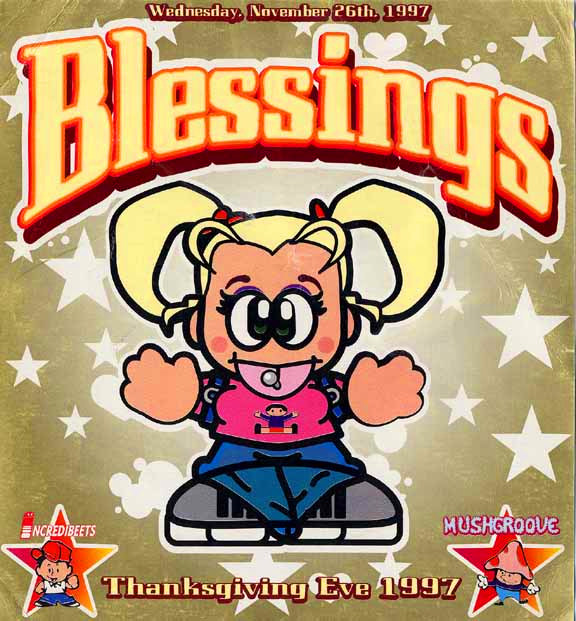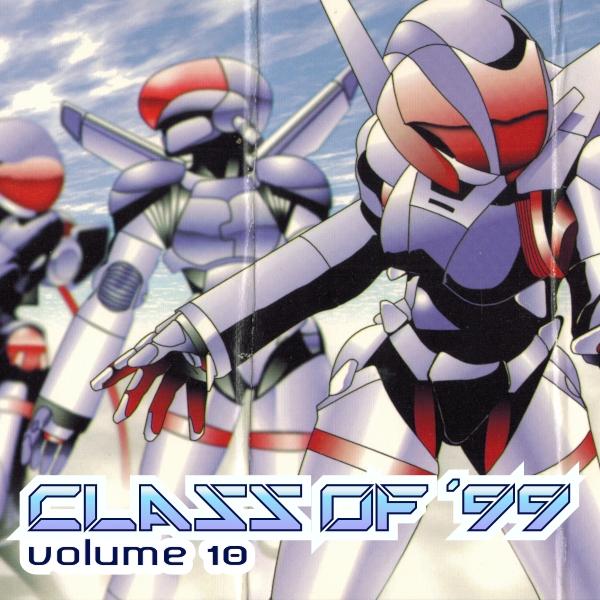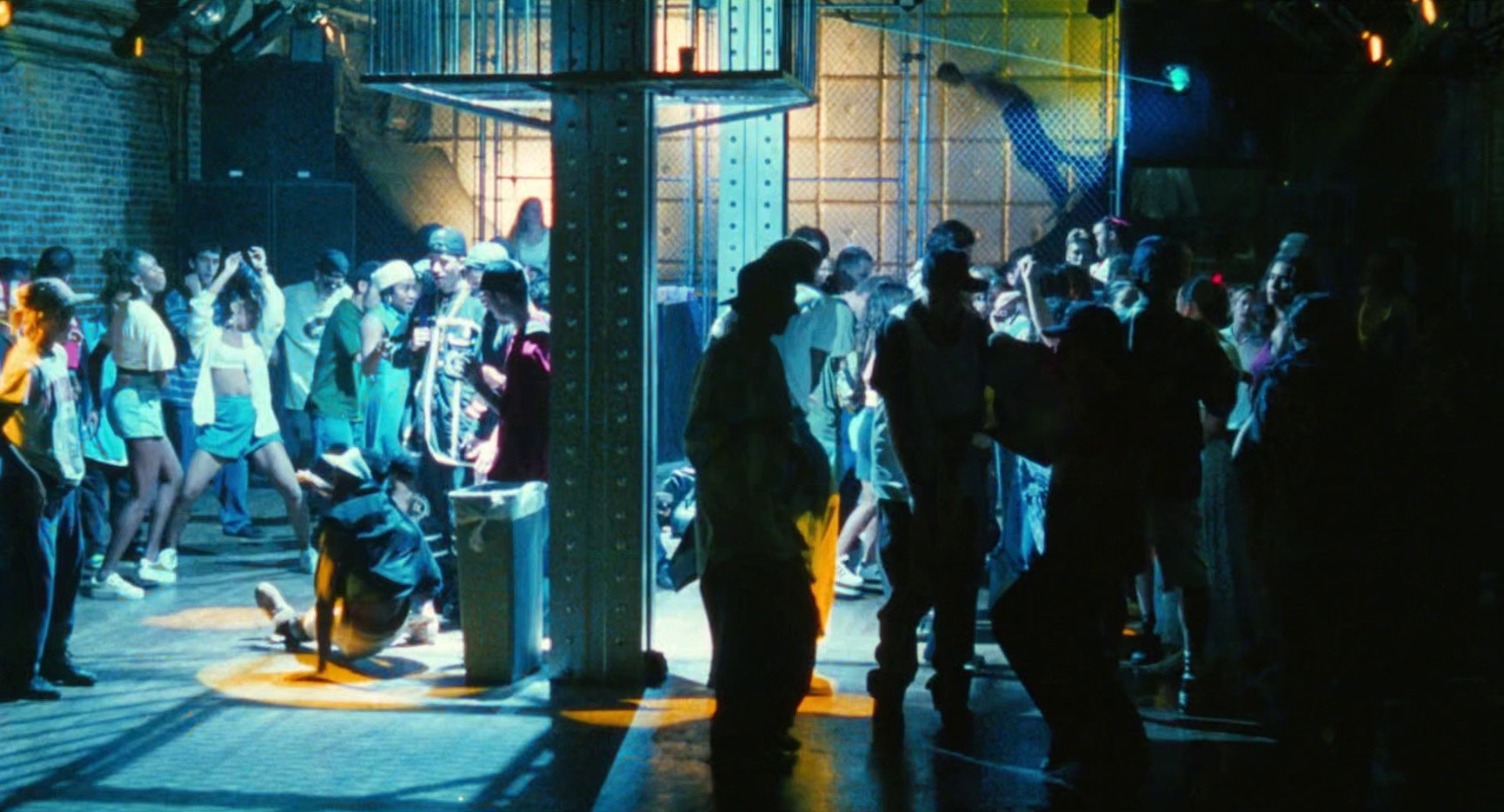Class of ’99 Vol. 10
Welcome back, and I hope you all had a nice Thanksgiving. This year would have been the 30th anniversary of Blessings, a yearly rave founded by Chicago’s Incredibeets crew. While most raves happened on Friday or Saturday night, Blessings occurred on Chicago’s most infamous quasi-holiday, ‘Blackout Wednesday’. I always suspected this was a local phenomenon, and, indeed, the stub on Wikipedia categorizes ‘Blackout Wednesday’ under ‘Chicago’ and points out that it’s a bigger party night than even New Years’ Eve. I don’t remember if I ever blacked out at Blessings (which doesn’t mean I didn’t), but I do remember feeling extremely cracked-out on Thursday.

I still have my flyer for Blessings ’97, which was illustrated by Chicago’s resident caricaturist, DJ Phil Free Art. Phil mostly worked in pen-and-ink, and then used his Kinko’s card to print up the zines he handed it out at parties for free (hence the surname). This flyer was the first time I ever saw him do a vector drawing. Somehow, the cover art got screwed up and her shoes aren’t masked properly (though the back is correct). That bugged me when I was 17, and looking at the flyer now, it still bugs me today because I’m uptight like that.
Phil was a staple of the Chicago rave scene, with his signature style of illustration and his cheesy Happy Hardcore sets. Sadly, Phil passed away in 2015, and was honored in that year with a Blessings revival that featured his iconic raver-girl character.
“Show Me The Way” is therefore dedicated to DJ Phil Free Art, for whose contribution we are eternally thankful.

Track List
Follow these links to read more about the selections:


Rinôçérôse — Mes Vacances à Rio (1999)
This month’s mix opens with yet another cut from Installation Sonore. This record always reminded me of Stereolab, another French act with a strong Chi-town following. By the late 90s, the city’s electronic influence on its own post-rock scene became apparent when Chicago’s John McEntire started producing Stereolab’s music. At the same time, American ad agencies started licensing this ‘nu-lounge’ style of electronica for K-Mart and Old Navy ads, among others. Stereolab itself was featured in an ad for the revived VW Beetle. I still consider them among my top two favorite bands of all time.


Smokin Beats - Look Who's Lovin' Me (1995)
Smokin Beats was a production duo with their own record label, also called “Smokin Beats”, who released a number of must-have EPs in the Nineties. This tune comes from Smokin Beats Volume 4.
“Look Who’s Lovin’ Me” seems to be partly original, with studio-recorded vocals, and partly a remix of “Look Who’s Loving Me” from The Escofferys’ album Opinions.


Street Corner Symphony — Symphonic Tonic (1996)
I picked this up with a Mixmag compilation called A Midnight Summer’s Dream. It samples “Afrodesia” from the very talented and prolific disco duo Rinder & Lewis. They released it as ‘El Coco’ on the LP Dancing in Paradise.


Rinôçérôse — Le Mobilier (1999)
Look, I dropped another Rinôçérôse track! Can you believe it? This is probably their most well-known track.


The Plastic Avengers — Sideburns (1997)
Here’s another record from Toronto’s mediocre 90s House scene. I just learned that most of these NRK and Aquarius records come from from one producer named George Thomson, who released records under a number of pseudonyms. Almost every Canadian selection in my Class of ’99 series comes from this one Scottish guy. Interesting.
I always thought this was a Michael Jackson sample, but it actually samples “Love Has Come Around” by Donald Byrd, from the album Love Byrd.


Byron Stingily — Get Up (Mateo & Matos Back To Paradise Dub) (1997)
This was a huge mega-anthem, a few times over. It started in 1996 with “Get Up Everybody“, a loopy, repetitious track that quickly became a dancefloor favorite. Despite its infectious nature, the actual production left much to be desired, which may be why so many other producers felt compelled to reproduce it. Joey Negro released a version, and Chicago had its own hard house version. Byron Stingily, also from Chicago, released a vocal version that probably sold more copies than anything else Nervous Records ever released. Here, Mateo Y Matos basically cleaned up the ‘original’ Parade version.
The actual original is Disco Heat by Sylvester, from the album Step II.


Dirty Harry — Deep In Vibe (1996)
In the beginning, there was Jack, and Jack had a groove. And from this groove came the groove of all grooves! And while one day, viciously throwing down on his box, Jack boldly declared “Let there be House!” and house music was born!
“Jack’s House” is the most recognizable spoken-word recording in house music history. It comes from a 1987 record called “My House” by Rhythm Control, whose flip side included an a capella version with just the preacher’s voice. Virtually every house DJ had a copy of this, and you heard it spun over house sets constantly. It’s also been sampled more times in house than any other record, probably. If you came up in the Chicago rave scene, it’s likely you know this entire monologue by heart.
“Deep In Vibe” comes from Diry Harry’s Dimensions EP.



The Bucketheads — The Bomb! (1994)
This is probably the most famous disco house record ever released. “The Bucketheads” was actually Kenny Dope from Masters at Work, and he did for Henry Street Records what Byron Stingily did for Nervous, several times over. The video for “The Bomb” made it onto MTV, and the song charted on the Billboard top 100.
This is probably the most easy-to obtain track in this whole series, since it was on ESPN’s Jock Jams, NOW That’s What I Call Music!, and a million other things. This single was about a ubiquitous as those free trials of America Online that showed up in your mailbox and ended up as drink coasters.
“The Bomb” samples “Street Player” by Chicago Transit Authority, from the album 13. I already knew this record before “The Bomb” came out, because my father (who, incidentally, worked for the actual Chicago Transit Authority) owned a copy of 13 when I was little, and I always thought the cover art was cool. I assumed it was supposed to be a stylized version of Lake Point Tower, But based on its placement, it’s more likely meant to represent Marina City.


The Brand New Heavies — Shelter (Danny D mix) (1997)
I’d love to know the story behind this song, whose lyrics speak to the wayward existence of so many 90s ravers and club kids. Chicago had a number of all-ages clubs, including the original Juice, which I mentioned last month. There was also Dock Five, plus a couple others whose names now excape me. And then, there was Shelter.
But first, in the 80s, there was an all-ages club in Chicago called Medusa’s which got shut down by the city in 1992. By then, Shelter had opened up just outside the loop, and they started hosting a regular Medusa’s night on Thursdays that attracted all the weirdos from the original scene, which had evolved into this raver / club kid / cyberpunk thing. When I was 15, I had a girlfriend who had been grounded for a whole year because she snuck out of her house, went down to Medusa’s at Shelter, and somehow her mom woke up and found out, and figured out where she was. Her stepdad drove down there in the middle of the night and dragged her off the dancefloor. She couldn’t have been older than 14.
As an adult, I can’t help but wonder: what was in it for the club owners and promoters? These clubs didn’t serve alcohol, the door price was nominal, and Shelter stayed open until 5 in the morning. How did they make their money? Is there any prestige in a grownup hosting a venue for adolescents? I don’t get it. Even the name implied it was a kind of halfway house.
Medusa’s @ Shelter eventually got shut down, also, and then the whole club closed in 1998. But the one club night that was more important to US rave culture than any other was NASA @ Shelter, in NYC, which was immortalized in the 1995 movie Kids.
In fact, Kids is the only accurate portayal of American ravers ever committed to film, which is really unfortunate because it’s a disgusting movie that I never want to watch again. I knew a club kid named Teddy who was just like the doorman in Kids, and in fact I threw a party once at an all-ages venue, and the bouncer was this brain-damaged Croat who was just like the bouncer in this scene (he helped steal 1000 dollars from the door that night, but that’s a story I will revisit in the future). There was even an all-ages club—I think it was Dock Five—that had a caged halfpipe next to the dancefloor, exactly like in the movie.
Shelter is also the name is The Brand New Heavies’ 1997 album, which features several house classics in an organic, downtempo style.


Bob Sinclar — Vision Of Paradise (1998)
Bob Sinclar seemed like a French sleazeball, and his Paradise album was kind of overrated. This tune is OK, though. “Paradise” samples “Sambo” by Brass Construction, from Brass Construction II.


Rinôçérôse — Radiocapte (1999)
Are you getting sick of Rinôçérôse yet? I hope not, because there will be more to come in subsequent mixes!


Roger S — Get Hi (1996)
Roger Sanchez was (and is) way more famous as a DJ than as a producer. He’s considered a titan of the Ibiza club scene, which I never really understood, and still don’t. It’s an island off the coast of Spain full of British tourists, and it seemed like a lot of Latin-American DJs went over there and became superstars.
“Get Hi” samples “Movin'” by Brass Construction, from their first album.


Wildchild — Jump To My Beat (Todd Edwards Jump Remix) (1996)
My second favorite house record of all time. My quest for this elusive single became my first misadventure in e-commerce. There were basically two wholesalers of this kind then: Hard-To-Find Records out of England, and Germany’s GEMM. I bought this on my debit card, from a computer at my local library. When I finally received my copy, it was the wrong release and didn’t have the Todd Edwards mix on it. Bummer! Screw you, the Internet!
This amazing track is packed with more samples than I can identify, but I’ll try: There’s “Dimension 5ive” by The 5th Dimension, from Portrait; “Can You Feel The Beat” by Lisa Lisa & Cult Jam, from Their first album; “I Wonder If I Take You Home” By Lisa Lisa & Cult Jam, from the same album; and “Jump To It” by Aretha Franklin, from the album of the same name.
I think most of the vocal fragments are pieced together from the two Lisa Lisa records, but I’m not totally sure.


Boris Dlugosch — Ready (1996)
This was the flip to “Keep Pushin”, which I mentioned Previously. I never liked it, but I held on to this record for the b-side.


I:Cube — Disco Cubizm (1996)
My #1 favorite house record of all time. I have a strong, sentimental attachment to this record and associate it with a lot of good times and cherished memories. The Daft Punk version was more popular with DJs, but I always preferred the original, which I owned as a single and as part of the Picnic Attack LP.
“Disco Cubizm” samples “Street Life” by The Crusaders, from the album Street Life.


Trouble Men — Come Into The Party (1999)
Mashed up with “Disco Cubizm” is Trouble Men, from the LP On TV. I don’t recognize any samples from this track, but let me know if you do.
